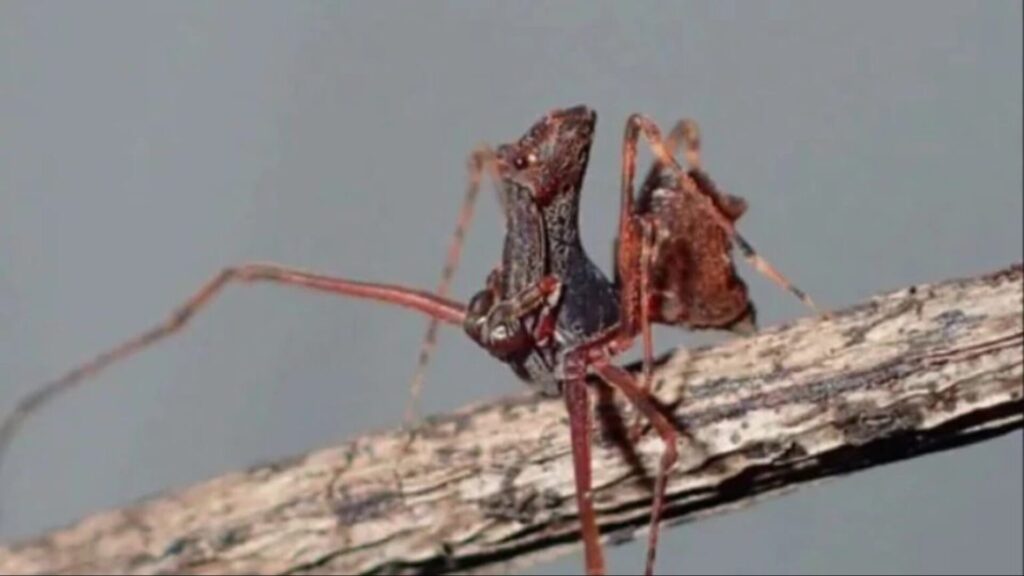
Photo: Reproduction/G. Anderson and M. Rix
A New species of assassin spider This creature, discovered in the interior of the Whitsundays in Queensland, Australia, has caused a stir in the scientific world. Researchers, who have been investigating various types of spiders since last year, identified a group of eight specimens in Conway National Park. Named after Austrarchia andersoniThis spider has unique characteristics that distinguish it from other species and make it a remarkable hunter.
Unique Features of the Killer Spider Ostrarchia andersoni
Austrarchia andersoni is a brown spider measuring only 0.2 centimeters, with a body structure adapted for efficient prey capture. Your Retractable legs One of its most notable features is its stinging ability. When retracted, the legs become shorter, which deceives the prey and makes it easier to approach. At the appropriate time, the spider extends its long legs and captures its prey with precision.
In addition to retractable legs, Austrarchia andersoni has two pairs of horns and structures on its abdomen that resemble humps. Experts are studying these structures to better understand their functionality and how they contribute to the spider’s survival and predatory efficiency.
till Killer spiders Austrarchaea andersoni live in the leafy soil of tropical forests. So far, they have only been found in Queensland, which indicates that they may have a specific and limited habitat. The discovery of these arachnids in such a restricted location highlights the importance of preserving these natural environments to ensure the survival of unique species.
The importance of the discovery of the killer spider
The discovery of Austrarchaea andersoni is important for several reasons. First, it expands our knowledge of spider biodiversity in Australia. Second, studying their unique features can provide valuable insights into the evolution and adaptations of predatory spiders. Finally, honoring archaeologist Greg Anderson, who first collected specimens of this species, in 2023 is a well-deserved recognition for his work and contributions to archaeology.
Over the past year, researchers have been discovering new species of pelican spiders, a group of spiders known for their long jaws that resemble a pelican’s beak. The discovery has led scientists to Conway National ParkWhere they found a group of eight spiders that did not exactly match the known description of pelican spiders.
Morphological and genetic analysis

Photo: Reproduction/G. Anderson and M. Rix
The scientists conducted a detailed morphological analysis of the collected spiders and compared them to other known species. The distinctive features of retractable legs and hump-like structures on the abdomen led to the conclusion that it was a new species. Furthermore, genetic analyses confirmed that Ostrearchia andersoni was genetically distinct from other pelican spiders, strengthening its classification as a new species.
The research faced many challenges, including the difficulty of finding spiders in their natural habitat and the need to conduct detailed studies under field conditions. Queensland’s rainforests are dense and difficult to navigate, making collecting samples a time-consuming and difficult process. However, the researchers’ dedication and persistence resulted in an important discovery that will enrich the field of archaeoastronomy.
Also read: Discovery of spider fossil provides new insights about life in the Carboniferous
The discovery of Austrarchaea andersonii also highlights the importance of conserving natural habitats. Queensland’s rainforests are rich and diverse ecosystems that are home to countless unique species. Protecting these areas is vital to preserve biodiversity and ensure that species like Austrarchaea andersonii are not lost forever.
conclusion
A New species of assassin spider discovered Austrarchaea andersoni is an important milestone in scientific research. Its unique features and restricted habitat highlight the diversity and complexity of the natural world. The tribute to archaeologist Greg Anderson highlights the importance of fieldwork and dedicated research in discovering new species. Protecting these ecosystems is essential to ensure that discoveries like this continue to occur and that the planet’s biodiversity is preserved for future generations.



